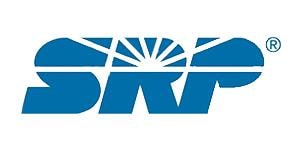Making desert living cool and comfortable
Salt River Project uses SAS® to minimize generator downtime and anticipate future demands on the power grid
Nearly 100 days a year, the Arizona Valley desert reaches highs of 100 degrees Fahrenheit or more. While the region bakes, power companies ramp up to meet the demand of the harsh environment – and of one of the fastest-growing populations in the US.
By analyzing all this data, we gain an accurate picture of our actual generation so we have a fine-tuned understanding of maintenance requirements.
Steve Petruso
Senior Software Developer
SRP Supply and Trading Group
Fortunately, the Salt River Project (SRP) power district, one of the nation’s largest public power utilities serving approximately 1 million retail customers in the Phoenix area, knows the answer to keeping everyone cool on even the hottest days. It analyzes data from production equipment sensors, customer usage – and even about the weather itself – to anticipate demand and optimize the production of its generating resources.
SRP uses SAS Analytics to prevent unplanned downtime by accurately determining when combustion turbines are running in order to schedule required maintenance. SRP also employs SAS to predict power supply and demand, allowing its Supply and Trading Group to use a variety of data, including weather, supply, demand and outage, to accurately purchase energy to meet customer demand – or sell excess power to keep costs in line.
Eliminating unplanned downtime
Manufacturers have exacting specifications for when the turbines that generate power require maintenance. Maintenance schedules are based on the amount of time the resource has been producing power. Typically, a generating resource must be scheduled for maintenance on or before a manufacturer’s required maintenance schedule to ensure the unit operates properly.
“If we don’t perform scheduled maintenance as required, we’d be out of compliance with the manufacturer’s warranty and would risk having an unplanned outage on a critical resource,” says Steve Petruso, Senior Software Developer at SRP’s Supply and Trading Group.
SRP owns and operates multiple generating sources, and keeping track of them and scheduling generator maintenance is a highly complex process. Data sensors on each generating resource capture data every few seconds, resulting in hundreds of thousands of measurements that SRP tracks in an OSIsoft PI System. SRP uses the SAS/ACCESS® Interface to the PI System to bring these measurements into its SAS data mart and then employs SAS Analytics to help predict when each unit will require maintenance.
“By analyzing all this data, we gain an accurate picture of our actual generation so we have a fine-tuned understanding of maintenance requirements,” Petruso says. “Without a solution like this, we’d be guessing or estimating generation, and the results wouldn’t be as accurate.”
Having accurate data about when generators need maintenance also allows SRP to better schedule downtime across multiple facilities to maintain a steady supply overall. “When you have multiple generating resources, you have to look at your entire portfolio,” Petruso explains. “If you’ve got two plants down already, you don’t want to bring a third down at the same time.”
Accurate trading balances supply and demand
For more than 15 years, the Supply and Trading Group has used SAS Analytics to predict available power supply and customer demand. These predictions can go out as far as five years. Predictive analytics allows traders to track a resource and when they have excess electricity – or need to make up a shortfall – so they can make better decisions about how much power they need to buy or how much excess they have to sell.
Understanding future needs requires SRP to consider many factors. It uses current and historical data about customers’ energy use and generation information from their power sources. Although SRP generates much of its own power, it also uses energy purchased from renewable resources, such as solar and hydrothermal.
For distributed and renewable energy resources, weather has a direct impact on the efficiency of energy production. As a result, the SAS data mart incorporates weather and temperature data from multiple weather stations across the valley. SRP even tracks planned maintenance downtime, which means power will be in shorter supply.
Traders have direct access to this data through a web browser in real time, rather than having to rely on IT to give them downloads of data.
“Because traders have real-time data and don’t have to wait a day or a week, they can run our models and tell within minutes what our forecast will be,” Petruso says. “These timely forecasts allow traders to precisely determine when they’ll need to buy or what they’ll have available to sell so they can develop more successful trading strategies. Better prediction also means our traders can purchase energy ahead of time in a manner that optimizes prices. We can go out and lock in future prices that may be lower than they would be if we waited until the last minute.”

Challenge
- Analyze hundreds of thousands of machine sensor data points to predict when combustion turbines that generate power will require maintenance.
- Predict available energy supply and demand over a five-year period to more effectively make up shortfalls or sell excess energy.
Solution
Benefit
- Prevents unplanned generator downtime by ensuring an accurate schedule for preventative maintenance.
- Improves compliance with warranties for critical assets.
- Allows SRP to balance planned downtime across dozens of power plants.
- Enables traders to better determine when to buy or sell power to meet demand.
- Helps traders lock in better prices by predicting when they’ll need to purchase power in advance.
